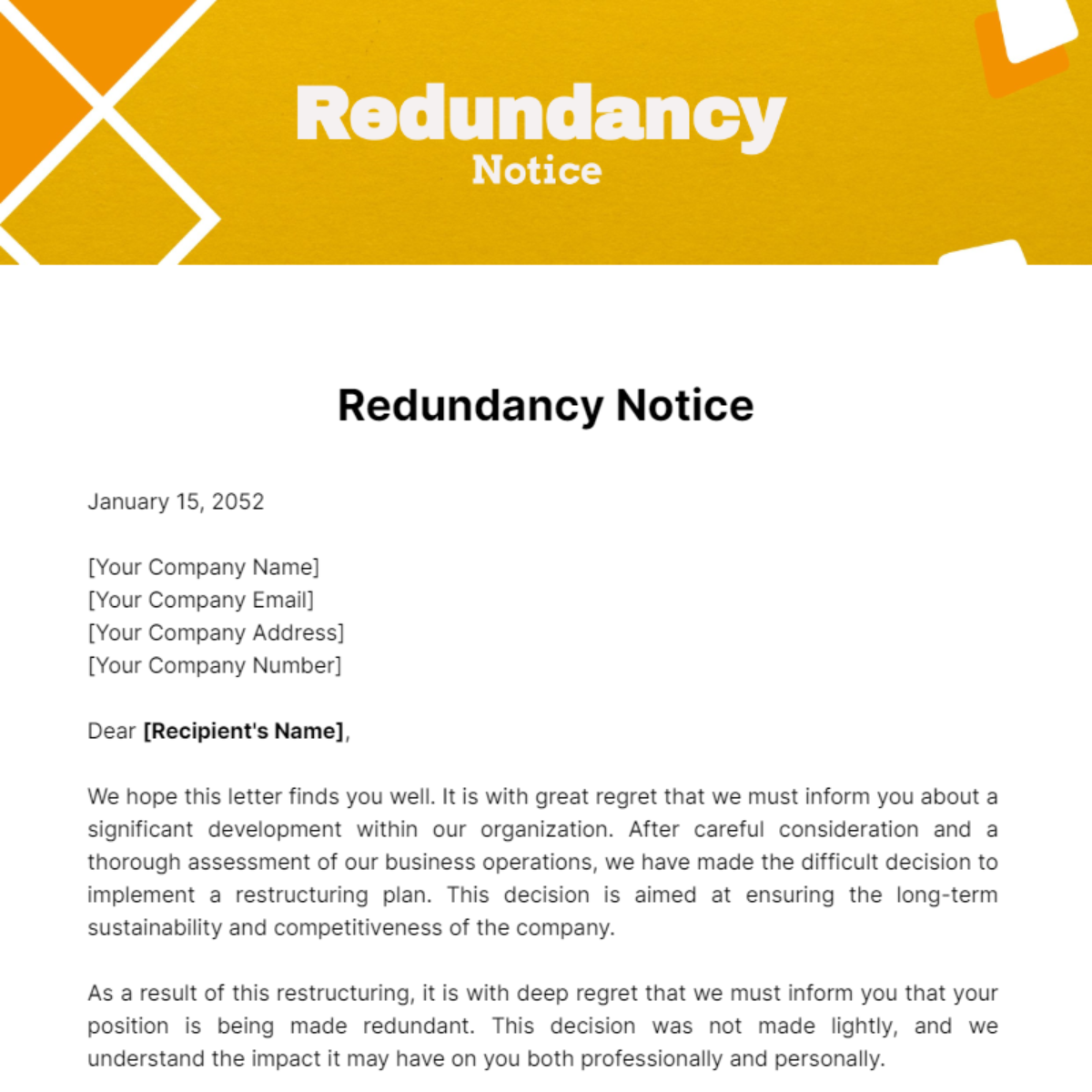Who Pays Redundancy Money? An In-depth Overview for Employers and Employees
Who Pays Redundancy Money? An In-depth Overview for Employers and Employees
Blog Article
Investigating the Interaction Between Firm Redundancy and Organizational Flexibility for Future Growth
In the vibrant landscape of today's company globe, the intricate partnership between firm redundancy and business versatility arises as a critical variable for continual development and success. Firms commonly face the obstacle of striking a fragile equilibrium between keeping a degree of redundancy to reduce risks and promoting flexibility to react swiftly to the ever-evolving market needs. This delicate interaction holds the key to not only enduring in unstable times yet likewise prospering despite unpredictability. As we discover the complex measurements of this interaction, interesting insights right into exactly how organizations browse these complexities to pave the way for future development await.
Relevance of Business Redundancy
Firm redundancy is an important element that boosts business durability and mitigates functional risks. By incorporating redundancy steps within the organizational structure, firms can better stand up to unanticipated interruptions and fluctuations in the service environment. Redundancy offers as a calculated barrier, permitting companies to adjust and react effectively to unanticipated challenges without jeopardizing important operations.
One key element of the relevance of business redundancy is its role in guaranteeing connection throughout times of crisis. When encountered with abrupt adjustments or emergency situations, redundant systems, resources, or employees can tip in to maintain critical functions and stop extensive disruptions. This connection not just safeguards the firm's reputation and consumer count on but also decreases economic losses and operational downtime.

Approaches for Business Flexibility

Creating adaptable business frameworks that enable for quick changes to market characteristics and consumer needs is vital for remaining affordable in a swiftly evolving atmosphere. By proactively determining prospective interruptions and chances, companies can proactively adapt and thrive in an ever-changing business landscape.
Harmonizing Redundancy and Versatility
Attaining an unified stability between functional redundancy and business versatility is vital in navigating the complexities of a vibrant service environment. Striking the ideal equilibrium between redundancy and adaptability is a delicate process that needs a deep understanding of the company's objectives, industry characteristics, and threat resistance.
To attain this equilibrium, business require to carry out normal analyses of their operations to recognize areas where redundancy is needed for danger mitigation and where adaptability can drive innovation and growth. Executing flexible frameworks, promoting a society of continuous understanding and improvement, and encouraging open interaction throughout all levels of the organization are vital approaches to balance redundancy and flexibility properly. By straightening these two crucial elements, business can position themselves for sustainable development and success in an ever-changing business landscape.
Situation Research Studies on Adjustment Success
In examining circumstances of effective business adjustment, it comes to click for more be noticeable that the interplay in between functional redundancy and adaptability is a defining aspect in shaping resilient companies. A DVD rental solution, Netflix showed exceptional adaptability by transitioning right into a streaming platform when digitalization interfered with the industry. These case research studies emphasize the importance of functional redundancy coupled with business versatility in fostering long-lasting development and competition.
Building Durability for Future Growth
Building durability for future growth requires a strategic alignment of operational processes with market characteristics and emerging trends. Firms should adapt to altering settings by cultivating a society of flexibility, advancement, and continuous enhancement. Strength involves not only bouncing back from troubles but also proactively planning for future challenges. One vital element of structure strength is investing in robust danger administration strategies to mitigate possible disturbances. This consists of situation planning, diversifying supply chains, and establishing backup prepare for various backups (who pays redundancy money).
In addition, promoting strong relationships with stakeholders, such as consumers, staff members, vendors, and the neighborhood, is vital for maintaining and weathering uncertainties trust fund and support throughout stormy times. Reliable communication and transparency play an essential duty in structure resilience, as they aid straighten assumptions and help with partnership in navigating unpredictabilities.
In addition, companies need to focus on learning and growth initiatives to upskill employees and outfit them with the necessary tools to adapt to transforming circumstances. By buying their workforce, business can improve their adaptability and agility, eventually reinforcing their strength for sustainable future growth.
Final Thought

In the dynamic landscape of today's company world, the intricate partnership in between business redundancy and organizational adaptability arises as a vital factor for continual development and success. Firms typically face the obstacle of striking a fragile equilibrium in between preserving a level of redundancy to minimize threats and fostering adaptability to react promptly to the ever-evolving market demands.To attain this equilibrium, companies need to conduct normal evaluations of their operations to determine areas where redundancy is needed image source for risk reduction and where versatility can drive advancement and development.In conclusion, the interplay between company redundancy and business flexibility is critical for future go to website growth. Building strength with a combination of redundancy and versatility will make sure that companies are prepared for the difficulties of the future.
Report this page